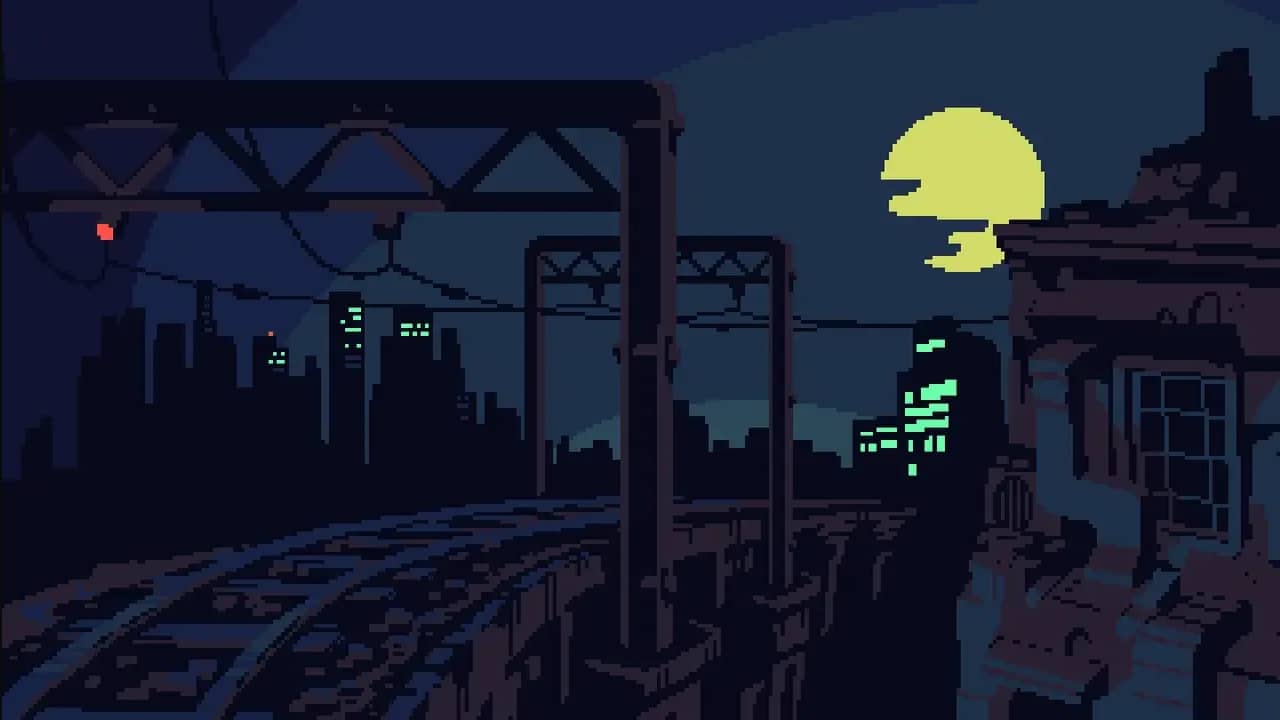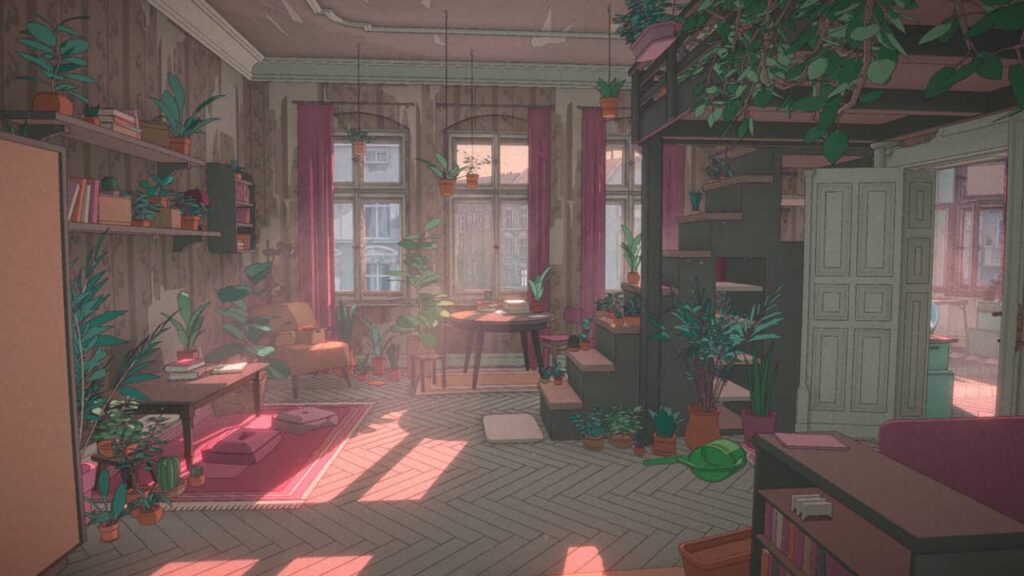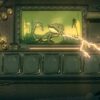I could spend a serious amount of time writing why you must play The Drifter and how it’ll blow you away if a veteran point and click adventurer, but to save both you and me time: just get it. You won’t be disappointed if a fan of the retro who fancies a modern twist with that slice of lime.
A few things came to mind with Powerhoof’s title, but let me whittle that down to a handful of references: The Thing, Nightmare Frames, and perhaps Decarnation. Perhaps those references are from an aesthetic point of view, but also thematically, too, what with the psychological horror aspect of it.
Forget all the ‘I’ve been following The Drifter for some time’ malarky (I genuinely have, and it’s been on my wishlist since… forever), let’s jump to the synopsis. You play as Mick Carter; the drifter of the title, who is en route to his hometown, returning for his mother’s funeral. Alas, it’s been five years since he returned, and his past is just about to catch up, as well as a few other… complications.
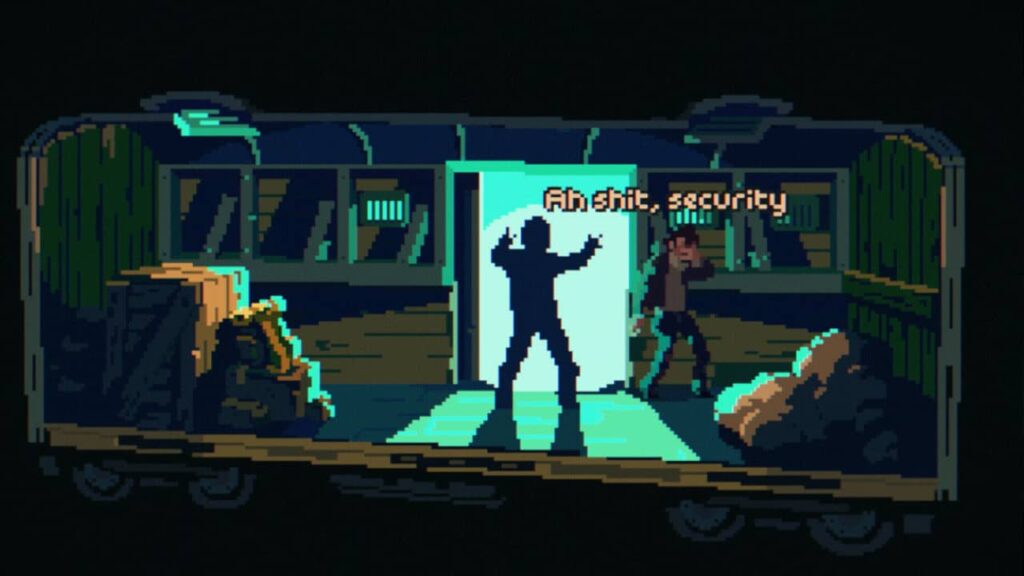
The Drifter Review
Nobody – absolutely nobody needs a tutorial on how to play a point and click, right? However, this is one of the first things about The Drifter that’s unique: the control system. Yes, it’s very familiar to point and click fans, but instead of moving a cursor around, the game plays out in a twin-stick fashion with the left stick moving Mick, and the right interacting with objects close by, dynamically changing as you move throughout the scene.
This potentially seems gimmicky, but it works beautifully and may just be the bridge for that awkward console gap when it comes to using a mouse. As I always mention, Unforeseen Circumstances did a great job on the Switch, but Powerhoof’s 2D adventure toolkit PowerQuest is genius in as much as Grim Fandango reinvented the wheel. The verb one, historians.
The Drifter is a 2D point and click with a conventional inventory system, but a restricted yet focused dialogue tree, meaning that conversations will unlock through exploration and tinkering with combinations and general pointing at stuff. As a result, there are no multiple endings on offer (that I’m aware of), but at the time of writing, I’ve played through three times for some elusive achievements.
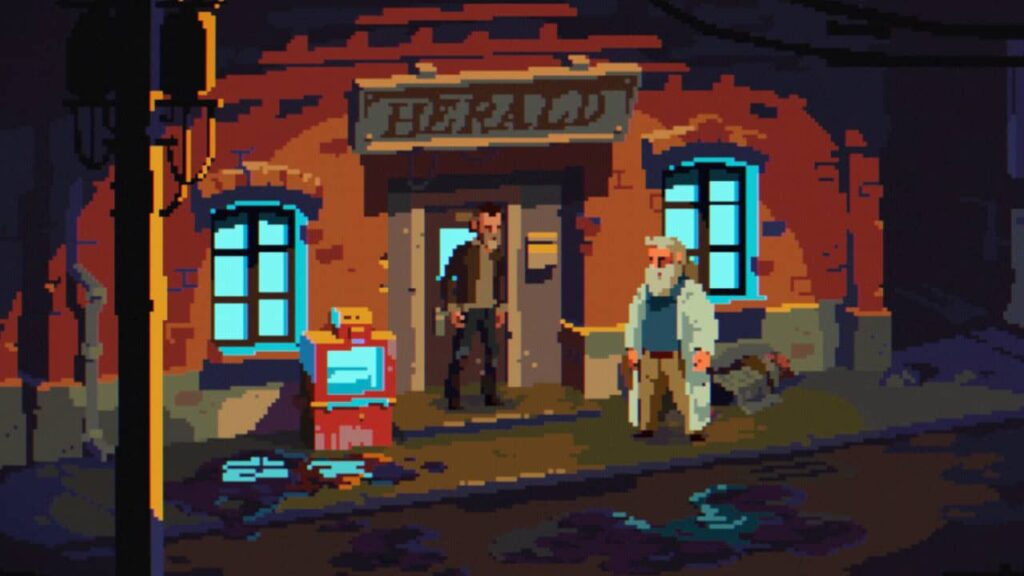
Are You Getting Deja Vu?
In fear of giving much away, and naturally alluding to Mick’s troublesome past coming back to haunt him, rather, everybody else moving on and he’s returning to the point in time where he left his former life behind, the narrative takes a sharp conspiracy theory/horror turn, leading to a plethora of questions begging to be answered on what the hell is going on.
Starting with a classic mistaken identity/framing, Mick plunges headfirst into the conspiracy and quickly has to make allegiances and repair previous relationships, as without these, he’s stuck in a very literal loop. Death is prominent here and is a regular occurrence, leading to our second modern twist for the genre.
Aside from the bespoke PowerQuest, The Drifter implements multiple death scenes and what-if moments that force the player to think on their feet fast. The twist here is that while it shares a common theme with Sierra games rather than LucasArts, death isn’t the end, nor does it prompt loading a save game (unless you’re after the same achievement as me). The typical point and click pace is there with a fair amount of walls and inventory combinations to explore, but in moments of life and death, you have a limited time to react.
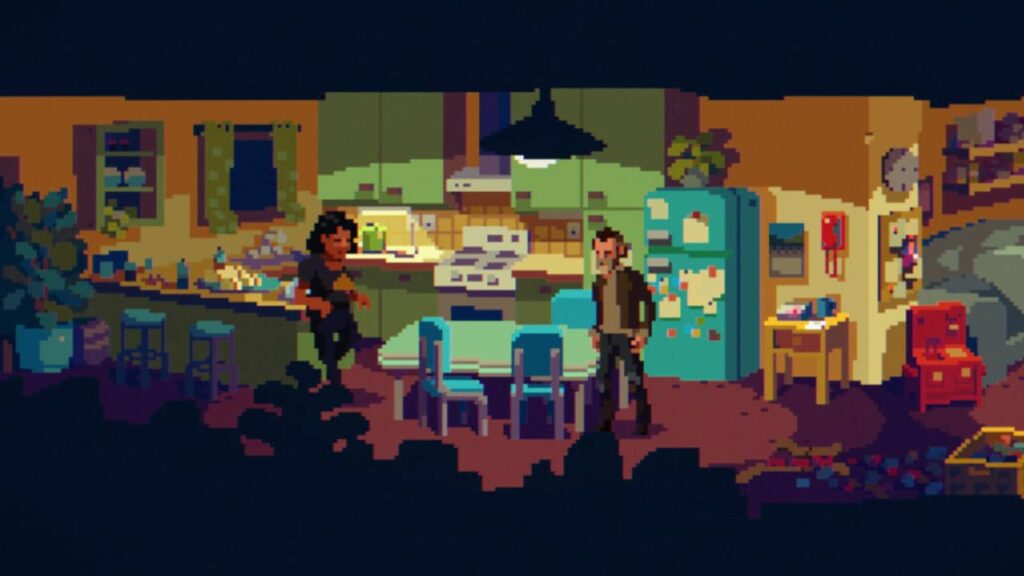
Are You Getting Deja Vu?
These set pieces can genuinely be quite infuriating as they go against the mechanics of the point and click. Sure, you don’t die, but like the recently reviewed The Midnight Walk, repeating the same sections and dying in a loop can get old fast. However, the nuances of trying something in a different order, rather than that last bit you did might result in a new gory death scene but open up the path for an alternative technique.
In hindsight, everything’s easy when you know, and replaying these scenes on the second and third playthroughs made me appreciate just how bloody good they were. As is common with the genre, the solution is often under your nose and requires some thinking outside of the box or the occasional pixel hunt to resolve.
What made me so tenacious through these adrenaline-infused pieces was the storytelling. With John Carpenter being one of my favourite directors of all time and an 80s product myself, The Drifter screamed all the things I love about psychological horror films, point and clicks, and visceral story beats. The visuals are absolutely brilliant in every way, and I couldn’t fault them, and the cast for this ‘talkie’ is one of the best I’ve heard, though the detective’s incessant ‘boss’ did my head in.
The Drifter Review Summary
As per the intro, I’m going in for the kill with this one without rewriting anything other than the speling mistaiks. The Drifter is undoubtedly a modern classic and dropkicks the point and click genre in the perineum with such ferocity that the ‘games are mind-numbing’ naysayers need to take note and value what a wonderful medium this is for telling a bloody brilliant story. Highly recommended.
When you’ve bought The Drifter, go get the back catalogue from itch.io.

